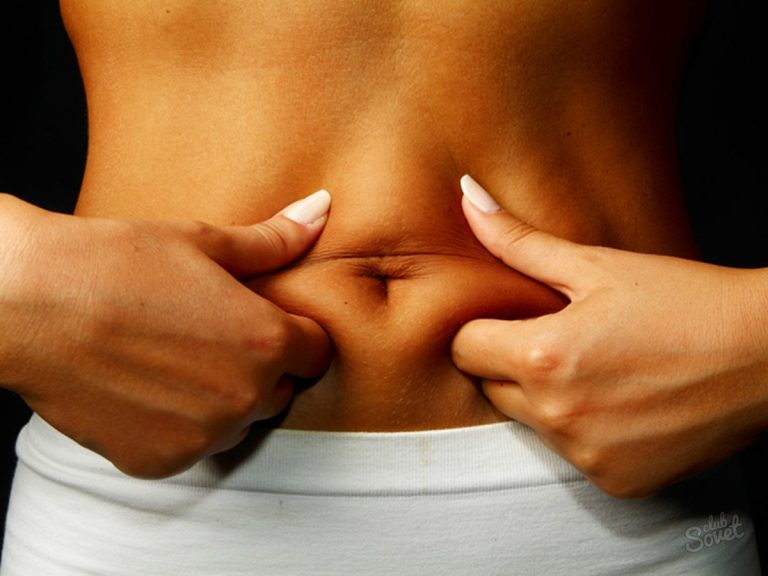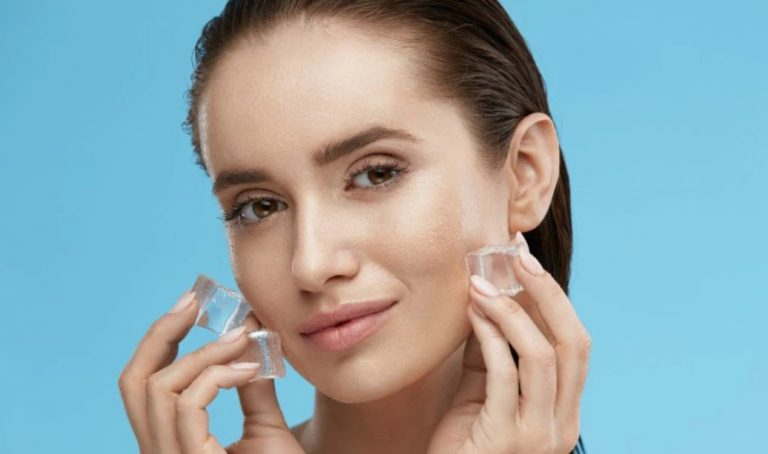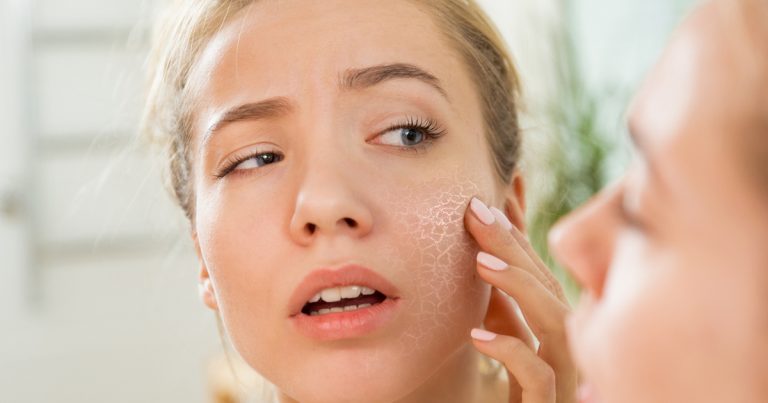Heat and sweat weigh down our skin. Suddenly the usual care routine leads to dryness, redness, and blemishes. We’ll tell you what you should pay attention to with your skincare in summer if you have dry and sensitive skin.
With this care routine, you can take your skincare to the next level on hot summer days.
That is why dry & sensitive skin needs a lot of care in summer

The skin is our largest organ and that is precisely why it needs a lot of attention. Especially in summer, it is exposed to particular stresses and strains: sun, sweat, frequent temperature changes due to air conditioning or salt and chlorinated water. That is why it needs additional care, often more than the rest of the year. You should therefore definitely adapt your skincare routine to the new influences and respond to the new needs of your skin. Because with rising temperatures, the moisture loss of the skin also increases. When it comes to the care strategy for sensitive skin, one must proceed carefully so that it does not lose even more moisture. For your sensitive skin, you need care products that only contain mild and highly pure ingredients.
These are the steps you should follow when taking care of your skin
Make-up removal and cleaning

After a long day, we first have to remove make-up residues and dirt particles from our skin. With dry and sensitive skin, it is important not to irritate your skin more than necessary. Cleansing oils in particular cleanse particularly gently, as they do not attack the protective acid mantle of sensitive and dry skin.
Toner
To ensure that the skin is also freed from all dirt particles and residues from the sunscreen applied in the morning, you should use a juicy toner afterward. This double cleaning step is also called double-cleansing. In our case, the facial tonic also ensures a refreshing feeling on the skin. Apply gently to the face, neck, and décolleté with a cotton pad.
Peeling
Regular peeling should be part of your weekly skincare routine. Because in this way your complexion will shine evenly again. Caution is advised when peeling because these can irritate the skin very quickly. With sensitive skin in summer, you should therefore only choose an enzyme peeling, as it gently removes dead skin and has a regenerating effect.
Serum:
The advantage of serums is that they are absorbed extremely quickly and can treat a wide variety of skin needs locally. Small dry spots, redness, or blemishes quickly appear, especially in summer. A serum is used for additional local care in addition to your moisturizer. One ingredient is particularly interesting for dry and sensitive skin: hyaluronic acid! The active ingredient helps the skin to retain moisture. In addition, the hyaluron occurs naturally in the body, which means that the substance is very well tolerated.
Night cream

If you want an extra dose of care, you can also use a night cream – after all, our skin regenerates best during sleep and, of course, caring support can do no harm. Important: If the skin is very irritated, make sure that it does not contain any fragrances. Rather rely on calming ingredients such as vegetable oils.
































